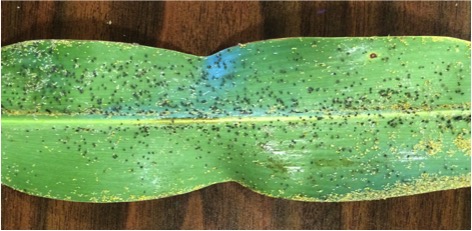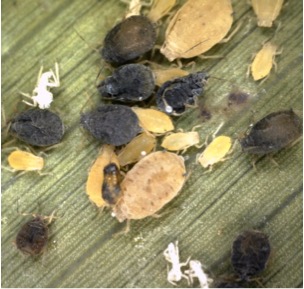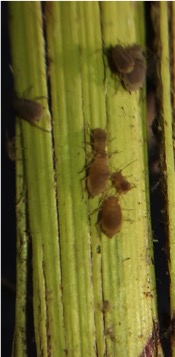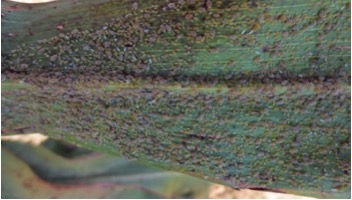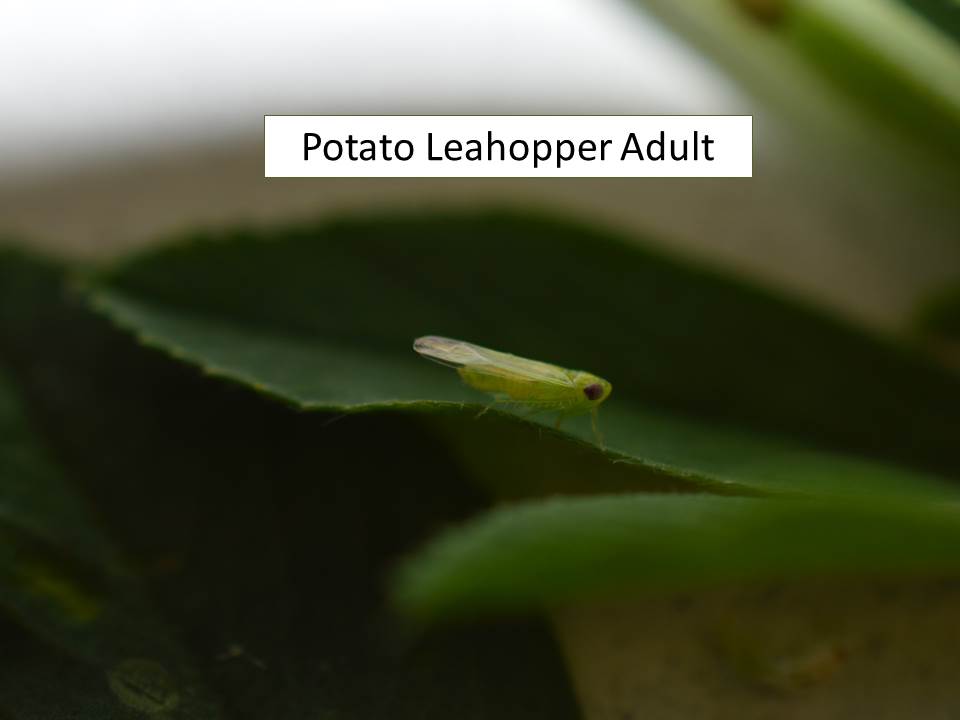–by Dr. Jeff Whitworth
Alfalfa weevil activity has increased significantly in the last week throughout North Central Kansas. The recent warm weather has really stimulated egg hatch thus there are large numbers of very small 1st instar larvae just starting to feed, plus older, larger larvae (fig. 1) that have been feeding for a week or so. However, some fields have very low infestation levels, while others have already reached the 100% infested level. Recent freezing temperatures appeared to have killed some top growth in some fields, which can be mistaken for insect damage.
Thus, sampling each field is always prudent, but even more so this year. We have gotten many questions recently about the predicted cold weather and its effect on the weevils, but remember, alfalfa weevils are cool weather insects. Temperatures into the mid 20’s for a couple hours may kill small larvae, as we saw in 2018, but probably won’t affect the eggs or adults. Then, anytime the temperatures are over about 45°F, the larvae feed and do so 24/7 as long as temperatures are above 45°F. Many fields were treated this week and probably should be whenever the treatment threshold is reached as the predicted temperatures for the next 10 days looks like it will slow the feeding activity down but probably not be cold enough to kill very many larvae. Have also gotten the question about spraying for army cutworms and that effect on alfalfa weevils. If both occur at threshold or one or the other does and you make an application of an insecticide you should get pretty good control of both. However, remember, cooler weather will slow down the effect of the insecticide.
Also, check this super neat picture of biological control at work (fig. 2). A turkey harvested by a Kansas youth hunter on 6 April had a crop completely filled with large army cutworm larvae.


